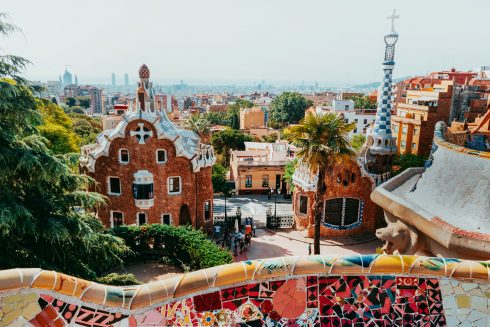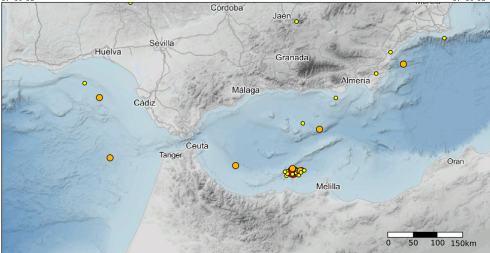WHEN the sun is shining and the sky is a deep, clear blue, there may not be a better place to be in Catalunya than on top of Montserrat.
This spectacular mountain, standing over 1,200m tall, is home to an historic Benedictine monastery and some of the most breathtaking views you can find in Spain.
Located an hour or so outside bustling Barcelona, Montserrat is the perfect day trip for anyone seeking some peace, quiet and respite from busy city life.

There are hourly trains from Placa d’Espanya which take you on a bending, guided tour of the gorgeous Catalan countryside before dropping you off at the foot of the mountain – a return ticket will set you back just north of €20, although as a resident I got onboard for free thanks to my T-Mobilitat travel card.
On the train, there are two stops you can get off at: Monistrol de Montserrat and Aeri de Montserrat, both of which have accessible transport links towards the mountain.

Arriving at Aeri de Montserrat, a quaint, cute train station taken out of a WWII evacuee film, I was astounded by the vastness of the mountain which loomed over us from above.
Thankfully, you do not have to climb the sheer rock face, with cable cars included in the return ticket price arriving at regular intervals to shepherd the crowds up.
The cable car reaches the midway point of the mountain where you are greeted by a divine monastery nestled into the mountain’s intriguing, magnificent and totally unique rock formations, almost like rounded logs, which protrude towards the sky.

When you arrive, take time to explore the array of fascinating buildings, but not before turning behind and appreciating the remarkable views that extend all the way to the horizon.
Montserrat is home to an imposing basilica, an array of hotels, restaurants, and other intriguing buildings lathered in history which are well worth exploring.
Yet the jewel in Montserrat’s crown are the incredible views and natural geography which take the breath away.

From the monastery you have two options: hike up the meandering, steep gravel paths which slowly bring you to the summit, or take the Sant Joan funicular which reaches the same destination without the calf-burn-inducing inclines.
Visiting with a friend from the UK, we decided to brave the 25C heat and follow the paths, making sure to take plenty of water with us.
The first stop on the route to the 1,200m high peak was a religious monument, a cross perched on a perilous ledge.

The ledge provided us with a truly spectacular view of the monastery and the encompassing conglomerate rock formations, a picture-perfect location for any Instagram snaps or BeReals.
From a wider vantage point, you can see Tibidabo, the iconic church which looms over Barcelona’s urban heart, the city’s port and the sparkling blue of the Mediterranean sea, over 40 miles away but easily spottable given the height of the mountain.

Looking the other way, the snow-capped peaks of the Pyrennees mountain range come into view, with the rolling plains and hills of the Catalan countryside extending to the foot of the peaks.
Things only get better as you continue to stomp upwards – reaching the top is a tough walk, but immensely satisfying with views which you can stare at for hours and hours (although not too long, as you need to make sure you don’t miss the last train back to Barcelona!).
Click here to read more Spain News from The Olive Press.








